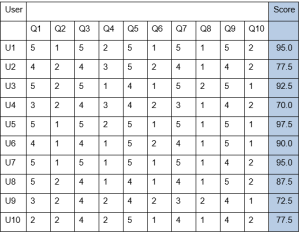Development and evaluation of an AR training tool to support the practical learning of sonographic examinations of the neck region
Aim and Research Question(s)
This thesis aims to evaluate the effectiveness of an augmented reality (AR) training tool developed with Meta Spark Studio to support the learning process of novice students performing sonographic examinations of the neck region. To achieve this goal, the following research questions were derived:
- Can a visual tool support beginners in learning sonographic scanning skills?
- How can a visual aid designed to assist the learning process be developed?
Background
Sonography is a diagnostic tool used in radiology, which is inexpensive and can be used in almost all medical disciplines. Since sonography can be used in almost any field, examiner must have more skills and knowledge in the use of ultrasound, and so the demand for courses and continuing education is increasing constantly. Students are usually given coordination exercises on healthy volunteers with limited time and availability. A prototype application adapting AR technology can support learning in sonography labs or at home. The application enables students to acquire missing information [1,2].
Methods
An AR training tool tailored for beginners was developed using Meta Spark Studio. To evaluate the AR training tool, volunteers were needed to undergo testing and complete a questionnaire. The tool was tested over a two-week period, with participants engaging with the tool for between three and five hours each week. Following testing, participants were asked to complete a three-part questionnaire, which also included a System Usability Scale to provide an overarching perspective on users' perceptions of usability.
Results and Discussion
The features of Meta Spark Studio provided the flexibility to develop an application that meets the cognitive and practical learning needs of students new to sonography. The results of the questionnaire, indicate that it is possible to use visual tools to support learning. The average System Usability Scale score of 85.5 strongly suggests that the visual tool provides a very user-friendly interface, which is critical to ensuring that the tool effectively supports learning. A higher than average System Usability Scale score means that the tool is not only user-friendly, but also provides a better learning experience.

Table 1 System Usability Scale score of each user
Conclusion
This work highlights the potential of integrating technology, particularly AR, into the learning process, providing learners with a visual and interactive platform that supports and simplifies the complexities of sonography. In conclusion, the use of AR technology in healthcare education can be helpful, especially for teaching novice sonographic examiners, but further studies are needed to fully validate the educational utility of such tools.
References
[1] Ebner et al. (2019) [2] Rüger et al. (2020)
